I have always been fascinated by John Lennon, The Beatles and the guitars they played that changed musical history forever, for those of us who were there. I gathered these pictures and descriptions from other web pages on the internet. Thanks to those pages and writers for sharing this with us all!
Photo from “The Beatles Story” in Liverpool
Gallotone Champion
Lennon bought this by mail for about £10 after seeing an advertisement in Reveille magazine. Made by the Gallo company of South Africa, it was “Guaranteed Not to Split.” Banjo player and sympathetic spirit Julia Lennon allowed her son’s new guitar to be delivered to her house, rather than that of disapproving Aunt Mimi. (Another report says that John’s mother Julia purchased the guitar for him in 1957. At that time John did not have the money to purchase guitars, so this could make sense). The lad started a band, the Black Jacks, with his mate Pete Shotton. His mother had shown him a few five-string banjo chords, so Lennon played the guitar with the sixth string left slack. With the addition of a few more members he rechristened the group the Quarry Men, and it was that outfit that played the St. Peter’s Parish Fete in Woolton, Liverpool on 6 July 1957 when McCartney entered the picture.
Conflicting reports on who bought this guitar for John but it seems it may have been Jim Gretty who sold Mimi the guitar for John.
From Mersey Beat article on Jim Gretty:
Jim had worked as a local entertainer on Liverpool’s Clubland circuit since the 1930s. He obtained the initial job as demonstrator at Hessy’s after he suggested to owner Frank Hessy that a good way of selling guitars would be for him to give free lessons to anyone who bought a guitar. So Hessy rented another shop and each Monday Jim would spend an hour and a half teaching a group of 30 to 40 youngsters. It was Jim who sold a guitar to Mimi Smith when she dropped in one day in 1957 with her nephew John Lennon.
http://triumphpc.com/mersey-beat/a-z/gretty.shtml
So where has it been all these years? In its auction coverage, the Time of London reported that “when the Beatles became successful, Lennon left the guitar in the care of his guardian, Aunt Mimi.
The Sotheby’s catalogue adds that “a percentage of the proceeds from the sale of this lot will be donated to the Olive Mount Learning Disabilities Directorate, Liverpool. ” Interestingly, it also includes excerpts of an undated document accompanying Mimi Smith’s donation. Her typewritten and signed letter, sent from her home in Sandbanks, Poole, states:
“With regards to the request for items in support of your Liverpool handicapped musicians appeal, most requests I have to refuse, however, in this case I feel able to make an exception . . . The poor old guitar was in such a state when I found it I had it professionally repaired . . . I hope that through you, John’s possessions can bring pleasure . . .”
The guitar, which was auctioned the first time together with the trunk it sat in for years, now sports a brass plaque Mimi had mounted on the headstock memorializing her advice to the young, guitar-happy Lennon: “Remember, you’ll never earn your living by it.”
Photo credit JONATHAN UTZ/AFP/Getty Images
LONDON, UNITED KINGDOM – AUGUST 24: John Lennon’s Gallotone ‘Champion’ acoustic guitar sits with restaurant waitress Jade Wilde at the announcement of the guitar’s second auction by Sotheby’s in London 24 August 1999 at the Hard Rock Cafe. Lennon was using the guitar when he met Paul McCartney in July 1957 and is reportedly the most significant piece of early Beatles memorabilia to come onto the market.
So whence this mythic instrument? An anonymous bidder later identified as a “private collector” named Adam Sender got it for £155,000 ($244,384). In the fall of 2000 this guitar went on display at Boston’s Museum of Fine Art.
Credit: Information on the Gallotone acquired from Share My Guitar (a special series of guest posts by John F. Crowley)
—————————————————————————————————————————————-
1958 Dallas Tuxedo
Dallas Tuxedo: tobacco-sunburst solid body (vintage unknown). It was Monday, 24 November 1958, and Johnny and the Moondogs were heading home from Manchester, where they had competed in a Carroll Levis talent show. The event wasn’t over, but the boys had to make a dash to catch the last train to Liverpool. There may have been another reason for their swift departure: John Lennon, who had arrived without a guitar, suddenly had one. Did he steal it from one of the other acts? Both McCartney and Harrison have said he stole someone’s guitar that night. Paul confirmed this in the Beatles Anthology.
If this guitar — one of the first electric models made in Britain — is the “Manchester Mystery Guitar,” Lennon apparently hid it in the loft at Mendips, his Liverpool home, for he was never photographed with it. Except for one visitor who got a brief glimpse of it in the kitchen, and another local who remembers Lennon looking for a case for it, the Tuxedo remained unseen until 1996, when workmen found the guitar, along with two banjo magazines, in the loft. Shortly after, Ernie Burkey, the man who’d bought Mendips, allowed two friends of his nephew Alan Stratton to visit the famous Beatles homestead. Burkey showed the two — Johnny “Guitar” Byrne and American Beatles expert Larry Wassgren — the items that workmen had found and, knowing the visitors were Beatles fans, gave them to the astonished pair, who reckoned that the Tuxedo was most likely the long-rumored purloined Manchester guitar. Wassgren graciously turned the Tuxedo over to Stratton, and it is to be auctioned by Bonhams in July 2012.
While there’s no photographic proof of this guitar being the one referred to in Beatles lore, it must be considered a strong candidate. Doubters include Beatles archivist Mark Lewisohn, who told this writer that one of the band’s friends went along with them to the competition and saw Lennon take a guitar but described it as “a complete piece of rubbish.” So, for the time being, the Manchester Mystery Guitar remains just that.
Note: While most accounts place Johnny and the Moondogs’ Manchester appearance in 1959, Tim Fletcher’s excellent research piece dates the event a year earlier.
John F Crowley
http://www.thecanteen.com/lennon1.html
—————————————————————————————————————————————-
1958 Hofner Senator (Compensator) SN 4697
Purchased by John Lennon in his Hamburg days
No photos exist of Lennon playing this guitar, and he never mentioned owning a Hofner Senator. An “authenticating” photo given to the most recent purchaser shows Lennon with a totally different guitar (his Epiphone Casino). One Quarry Man who did own a Senator is Ken Brown, and I asked him about it:
“I do not recall John actually owning one during the time I knew him,” he replied. “He may of course have acquired one at some later stage. I of course did own such a guitar.” Brown added cryptically that there was more on the subject in his autobiography, now making the rounds of publishers. So go figure.
Note: Guitars owned by John Lennon very rarely appear on the market. George Harrison’s verification of this guitars provenance in his letter to Lily Evans is invaluable. Harrison’s own keen interest in guitars meant that he had a clear recollection of the models he and his fellow Beatles owned and used over the years. In the course of Christie’s research, Lennon’s friend and colleague Pete Shotton told us that although he himself didn’t remember who played what guitar [Shotton himself was not a guitarist but played the washboard in the Quarry Men] George had an extremely good memory for detail and would not put his name to a statement unless it was correct.
It was purchased at Christies auction in July 2009 for $337,226 and is now in the lobby at AEI Music in Seattle, Washington. (Currently on loan to the Rock and Roll Hall of Fame – December 2017)
Credit: Information on the Senator acquired from Share My Guitar (a special series of guest posts by John F. Crowley)
———————————————————————————————————————————————-
1959 Hofner Club 40 126/B
Lennon purchased his Club 40 just one day before the first Casbah performance. A hire-purchase receipt from Hessy’s Music shop dated August 28th 1959 details a “Club 40 Hofner guitar” sold to John Lennon of 25 Menlove Avenue, Woolton, Liverpool, with Lennon described as a “student”. The guarantor of the loan is noted as Mary Elizabeth Smith – better known to John, of course, as Aunt Mimi. She placed a deposit of £17 for the new Hofner on that Friday in August. Total cash price was £28/7/-, but hire-purchase pushed that up to £30/9/- (£30.45, about $85 then; around £400 or $560 in today’s money). The document shows not only the date that Lennon acquired his Club 40, but finally puts to rest the story that Mimi bought Lennon his “first guitar” for £17.
Credit: Beatles Gear

John playing the Hofner Club 40 at the The Casbah Coffee Club. Cynthia Lennon watches from the front row, before the Beatles existed.
In commemoration of Hofner’s 120th Anniversary in 2007 they released the Hofner “John Lennon” Club 40 Limited Edition Guitar. Only 120 of these guitars were made worldwide
———————————————————————————————————————————————-
1958 Rickenbacker Capri 325 Serial Number V81.
The Holy Grail for Beatles fans – John’s 1958 Rickenbacker Capri 325 with the original Kaufmann Vibrato.
Photo: (c) Rickenbacker Int’l Corp
The Year: 1958. The Place: A guitar trade show in New York City. The man at the Rickenbacker exhibit, trying out the new merchandise: Jean “Toots” Thielemans. Behind him, at his right elbow: A certain Rickenbacker Model 325 that will change the sound of popular music forever and become the most valuable guitar on the planet.
History.
George Harrison remembers the occasion on which John Lennon purchased his first Rickenbacker, a 325 Capri model serial number V81, in Hamburg, Germany in 1960, “We went into this shop … in Hamburg. John bought that little Rickenbacker that became very well known through the Beatle concerts, with a scaled-down neck. I think he’d just seen an album by Jean Thielemans, who used to be the guitar player in the George Shearing Quintet and had one of those Rickenbackers. You have to imagine that in those days, when we were first out of Liverpool, any good American guitar looked sensational to us. We only had beat up, crummy guitars at that stage. We still didn’t really have any money to buy them, but I remember that John got that Rickenbacker … what they call ‘on a knocker’, you know? [Money] down and the rest when they catch you. I don’t know if he ever really paid them off”. John Lennon’s recent acquisition was one of twenty eight 325 models produced by Rickenbacker in 1958 and eight of these had a natural (mapleglo) finish, one of which was John’s. Pete Best also recalls the occasion, “John was looking around, he had his old Hofner Club 40, and we went into this music shop. We were all there together – we used to hunt around in packs, discovering what was available. Just mooching in general, as musicians do. John saw this Rickenbacker, and what actually knocked him out was the short scale of the fingerboard. Whereas before he had to stretch, John found that he could do the same riffs and everything without hardly moving his fingers. He just fell in love with it. He liked the sound. The Rickenbacker was his guitar!” Roundabout the same time as the purchase of his Rickenbacker Lennon also picked up a new Fender Tremolux amp, a tweed-covered, valve, 10-watt amplifier with a single 10-inch speaker. The first photos of John holding his Rickenbacker were taken by Astrid Kirchherr at the Hamburg Dom Funfair in October/November 1960.
Much has been said and speculated about the 1958 Rickenbacker 325 used by John Lennon during the initial rise to fame of the Beatles. Perhaps what makes the famous ‘Hamburg’ 325 so interesting is the amount of speculation regarding such issues as it’s original configuration, it’s modification, the refinish, alleged theft, and current whereabouts.
The first thing that most people notice is that the guitar has no sound hole or elevated pick guard unlike almost every vintage or modern hollow-bodied Ric you’ll ever see. If you examine examples of Rickenbacker’s very first capris from 1958 you’ll notice that they have only a single lucite control plate. It was towards the end of ’58 that elevated pick guards were introduced. The run of 325’s were produced very early in ’58. The lack of sound hole on Lennon’s 325 is harder to explain, but the feeling is that sound holes were not on the first few 325’s but were quickly introduced as a visual indicator that the 325’s were hollow. Without actually picking one up and feeling the exceptionally light weight, due to the alder body and extensive internal routing, they give every appearance of being a solid body, and hence lower quality instrument.
Next, if you compare Lennon’s 325 to almost every other known example of ’58 325 you’ll notice that it is unusual in having 4 controls. Most original 325’s have only 2 rotary controls and 1 pickup selector. The reason for this can be found in the ‘Rickenbacker’ book by Richard R. Smith. On page 162 and 163 it is noted that “the first 325 guitars had a single pickup selector switch, a volume control, and a tone control. However, later in 1958, the factory refitted the 325’s still in Rickenbacker’s inventory with two tone controls and two volume controls.” Due to the low position of the existing two controls it can be assumed that the two additional potentiometers were added above the existing two using the same ‘single’ lucite plate. This would also explain the ‘skewed’ placement of the controls on Lennon’s. The new Rickenbacker standard Rogan (stove) type knobs were likely installed in the process. Here we have another answer, John’s 325 was one of the retrofitted two control 1958 325’s.
Mr. F. C. Hall, of Rickenbacker, recalled four 325’s going to Hamburg. One was sold to West German dealer Walter Hofner at a Chicago trade show in 1959, and in October 1958, Rickenbacker shipped three maple finish 325’s to Framus Werke in West Germany. John’s guitar was one of these three. Shipping documents below still in existence, confirm it.
In the invoice above, you can make out the 3 serial numbers V81 John’s guitar, V82 pictured below and the rarely seen V93 with the F Hole below. All 3 of these guitars are now here on this webpage! See Below
1958 Rickenbacker Capri 325 Serial Number V82
1958 Rickenbacker Capri 325 Serial Number V93
John’s V81 and V93 both appear together in Beatles gear
Aside from the famous ownership it is, in itself, an extremely rare guitar. It was one of only eight natural finish 325’s made in 1958. It also is a solid top (no ‘f’ sound hole) which was not standard for the new 325 Capris. The other examples of ’58 325’s that are known to exist today all have a 2 O’clock ‘f’ hole, except for one natural finish model which appears to have been made alongside Lennon’s. John’s (and the other natural finish model) has an elongated jack plate of the type normally found on Combo type instruments. The reason being that the small jack plates we see in use on Rickenbacker’s were introduced in 1958. For the first few guitars made, they appear to have been unavailable and so production ‘made do’ by using the existing longer plates but without the strap screw normally found on combos. Less than 10 instruments have this oddity. By about ‘V90’ the new square plates are in use. The serial number of Lennon’s 325 – ‘V81’ is an interesting recent addition to our knowledge. It makes Lennon’s the 2nd production Capri made. ‘V80’ being the start of production for ’58.
The fact that Lennon’s was still sitting in inventory late in ’58 while many of the other 2 control models had apparently been sold makes one wonder whether Rickenbacker was unsure of what to do with these unusual early versions (prototypes?) with no sound hole. The 2nd unit produced and yet still in stock months later. Facilitating it’s use in at least one trade show that year. Suddenly an order for 4 325’s just like the one seen at the show….off they go to Germany…problem solved. Guitar history takes a turn. All of these features make it an extremely unusual instrument indeed, some say the most valuable guitar on the planet…..
Only 28 of this model were made in 1958. Several didn’t sell and in late ’58 or early ’59, those guitars were reconfigured from 2 knobs and one switch to 4 knobs and 2 switches. Lennon’s 325 was long thought to be made from Maple, but the body and the neck are actually Alder. Some who have researched the matter endlessly insist the Musikhaus Rotthoff in Hamburg wound up with the prototype from the New York trade show and this was the one that Lennon bought. Much scrutiny confirms that the pick guard, screw arrangement, the wood grain and the unusually bent Kaufmann vibrato arm are identical.
Credit John F Crowley and Glen Lambert
The 1958 Rickenbacker Capri 325 with a Bigsby tailpiece.
Above – 1958 Rickenbacker Capri 325 Painted Black at Ed Sullivan rehearsals.
Much speculation is made over the years as to why Lennon decided to paint the Capri black…and who actually did the paint job. Chris Wharton was a friend of the Beatles since they were “The Silver Beatles” and related this story.
“My father had a haulage business in Birkenhead and when I left school I worked for him. We transported fresh Irish beef from Birkenhead to London’s Smithfield Meat Market. We had Albion wagons, high quality Scottish built vehicles. I was more interested in groups and dances than the business which I was forced to go into being an only child.
The vehicles were painted by Charlie Bantam, a perfectionist, who worked for my father. He was the type of guy who would completely wash down a room prior to decorating to the extent that when he had finished you thought the room had already been decorated. He was also an excellent coach painter and sign writer.
John Lennon asked me whether I could get his guitar painted black. I cannot remember if there was any specific reason, I think he just fancied a change of colour.
I told him I could get the job done by way of a favour and this was arranged. Charlie Bantam reluctantly agreed to paint it. He didn’t know who the Beatles were and, to be fair, it was a time when they were not that well known outside Merseyside. He painted it with black Tecaloid enamel which was the make of coach paint used on the vehicles. It certainly had several coats of paint and it took several days to complete because I remember John kept asking if it was ready.
The control panel retained it’s gold finish but I think this was also repainted. I remember when we returned it to John he said we had put it back the wrong way around. Billy Kinsley from The Mersey Beats can confirm all this as I remember he was with me when John got the guitar back. As far as the precise time of year I would guess September 1962 but I cannot be absolutely sure.
Credit Peter McCormack
Restoration and Repair 1972 NYC
Part of the reason Lennon gave up on the Capri 325 was that the electronics were shot. Lennon had always been his worst enemy when it came to his guitars because he NEVER looked after them and was brutal at tinkering with them until they were no longer playable. When the Capri got painted black, it was clear that the wiring in the pickups was not done properly and in fact one pick was disconnected altogether (as confirmed by Chris Wharton above). If you watch Lennon in video’s and TV shows, he always played with the switch in the middle position. The middle pickup was the one that did not work, so the switch in the middle position would combine neck and bridge pickups. There are unconfirmed reports that Lennon disconnected the middle pickup to stop it from “clicking” during recording sessions.
The man who restored and repaired this holiest of guitars was Ron DeMarino. He owned a guitar repair and restoration business on Long Island. His story about the repair and restoration can be found here – [Ron’s Story]
The last public performance with the ’58 Rickenbacker 325 was at Carnegie Hall in New York in 1964. After the first Ed Sullivan Show on February 9th 1964, The Beatles played in Washington on February 11th, then back to New York to play 2 shows at Carnegie Hall on February 12th. They flew off to Miami for the Second Ed Sullivan show and it was at the Deauville that John was given the ’64 Rickenbacker 325.
The original machine heads and Gold pick guard from John Lennon’s 1958 Rickenbacker 325 are being offered for auction by Ron DeMarino along with photo’s and original receipts. Ron asked Lennon if he could have the items in August 1972. Lennon said sure, he had no use for them anymore.
————————————————————————————————————————
John’s 1964 Rickenbacker 325 c64 “Miami” SN DB-122
This replaced the 1958 Rickenbacker Capri 325.
It was at the Deauville that he took delivery of his new Rickenbacker guitar. According to the original receipt in the Rickenbacker archive, the new black model 325 guitar was sent directly to the hotel from the Rickenbacker factory in California. The following day’s rehearsals on the set of The Ed Sullivan Show marked the first time that Lennon played his new Rickenbacker 325 guitar with the group.

Lennon playing his Rickenbacker 325 on the Ed Sullivan show in 1965.
Close up of the 1964 Rickenbacker 325 with set list taped on to it.
The “Best Guess” set list from December 1965 UK Tour. According to Beatle fans “We can work it out” was only played on the December 1965 UK tour.
Dizzy Miss Lizzy
I Feel Fine
She’s a Woman
If I Needed Someone
Act Naturally
Nowhere Man
Baby’s in Black
Help!
We Can Work It Out
Yesterday
Day Tripper
I’m Down
Lennon dropped it at the 1964 Hammersmith Christmas show and cracked the head stock.
Photo from Andy Babiuk Beatles Gear Book (Chapter 7, page 207)
The 1964 Rickenbacker 325 in the John Lennon Museum in Tokyo Japan. (The museum closed on September 30, 2010)
———————————————————————————————————————————————-
A cool story i came across on The Beatles Universe facebook page from a man named Mark Raymond from Hartwick New York. It tells the story about his mother Dorothy “Dotty” Tandle assembled and finished this custom order guitar (and many more) for John Lennon.
My mother made John Lennon’s, 1964 325 c64 “Miami” Rickenbacker Guitar.
Dorothy Jean Tandle…. “Dotty” was working at (RIC) Electro Strings Rickenbacker Guitars back in February 1964. She was asked to follow Lennon’s Custom 325 guitar from start to finish. This is the Black & White semi-hollow bodied “Miami” model (serial number db122, d=1964, b=Feb.).
She sanded the body, then worked on the neck & fret board, then she assembled the guitar after the finish was applied. She did all the work herself. She did the same for many custom orders at that time. She was trained in all areas except the wood shop and finishes.
She did all the sanding, fret board assembly, soldering, binding, hand cut the pick guard and put all the other pieces on John Lennon’s Custom 325.
After finishing the guitar, she gave it to the tuner/inspector. He asked my mother “Since you built it, what song would you like to hear?” My mother said…“Peanut Butter And Jelly”.
That was a song she wrote and the tuner knew the cords. My mother sang the song as it was being played. SO… The very first song ever played on John Lennon’s famous 325 was a song my mother wrote about the messes I made as a child. There is a “GREEN” check mark inside the guitar.
My mom worked on several famous guitars of that era.
Four guitars that all were “First” for Rickenbacker. First 360/12 Production model,(George), First RIC guitar with a fifth tone knob (John’s 325 c64 Miami), First RIC 325/12 (Custom for John), First Left Handed Bass (Paul), Harrison & McGuinns 12 strings. John’s Custom 325/12
Mom is now 89 years old and lives in So Cal. My Father was the insurance man for “RIC” for 19 years. He used to go Bowling a lot with Ward Deaton, the GM at the time.
My dad has watched my mother several times do all the work on custom guitars at the factory. He would give them advise on safety issues. I have been to the factory in Santa Ana as a kid.
Dotty worked at “Rockwell International” in Santa Ana Cal doing soldering on electronic equipment.
When Ward Deaton (GM at RIC) heard that she was very good at soldering from my dad while bowling one night, he told dad to have her come apply at RIC and he would give her a better paying job doing the soldering on guitars. She was taught the other processes like sanding and fret installation/finishing. She was one of only 8-10 workers at Ric at that time. One other woman was there when mom started, and that lady seemed to get upset because Ward was training Dotty to do so many job functions. The men liked her a lot. The head inspector/tuner would pick her up and drive her home after work. I would go there after school and wait for her to get off work to go home. I was 9 years old and remember being there many times. Mom was 34 years old at that time. She is now 89 and doing very well. She is very proud of the work she did on many famous guitars.
She did mostly Bass guitars, 12 Strings and special orders. Worked at her own bench. Ward would bring her the parts and she did all the work except wood shop and finishes paint shop. Her first job at RIC was doing Soldering. She was so fast and good that she needed other work so they trained her to do everything except Wood Shop and Finishes.
Ward told my father on numerous occasions that my mom did the best detailed finish work at the factory. “Her work is Meticulous” That is why she was picked to do some of the most famous guitars at that time. She deserves the credit, she did the work. The 325 is currently in the R&R HOF
I was only 9 years old when John’s guitar was made. I would get dropped off at the factory after school (near by) and wait for mom to get off work. The head tuner/inspector would give us a ride home three days per week. That day she was quite excited after work because of working on John’s guitar. I don’t know how long it took to assemble the guitar, but I know she said it is all that mom worked on that day in February 1964.
In the seventies, I worked for “Fender Musical Instruments” owned by CBS at the time.
I made a Fender Rhodes Electric Piano for John Lennon.
The one used on “Walls and Bridges”
My mother and myself are the only mother/son that both built an instrument for John Lennon.
Ward Deaton once said…..”Our guitars are so sexy because Dotty does such a fine job on the bodies”
1964….”Dotty” watching The Ed Sullivan Show with John and George playing a RIC guitar that she worked on. Very Proud and Happy.
Credit for pictures and story to Mark Raymond. Thank you to the Tandle family for sharing this great piece of history and thank you Dotty cause you just ROCK!
—————————————————————————————————————————————-
1964 Rickenbacker 325-12 String
At the Play it Loud Exhibit at The Metropolitan Museum of Art 2019
According to “Beatles Gear”, it was at the Boston Gardens in Massachusetts on September 12th, 1964 that Lennon used this in concert. This was one of the only shows on the tour where Lennon was pictured using his Rickenbacker 325 12-string in live performance. The 12-string was usually only present as a spare during this tour.
John also played the 325-12 string on a Dutch TV Show in 1964 but it was a lip sync to a recording with live mics singing over the tracks. Jimmy Nichols played drums as Ringo was sick.
Source: Beatles Gear
———————————————————————————————————————————————-
1964 Rickenbacker 325 Model 1996″Beatle Backer” – Serial No.DE519

John Lennon with his 1964 Rickenbacker 325 Rose-Morris Model 1996
In 1964, Lennon damaged his new 1964 Rickenbacker 325 Jet-glo. Lennon dropped it at the 1964 Hammersmith Christmas show and cracked the headstock. It was replaced with an Export version 325FG by Rose Morris Model 1996. He used this as a home studio guitar for a period of time and eventually gave it to Ringo. Ringo eventually auctioned both this guitar and Georges 1962 Gretsch Tennessean.
The 1964 Rickenbacker 325 Rose-Morris Model 1996 on display at EXPO 86 in Vancouver BC. I took this photo on May 2, 1986.
Ringo Auctions off John’s guitar – December 4th and 5th, 2015
This guitar sold at Julien’s Auctions for $910.000.
Jim Irsay’s Beatles Gear Collection
1964 Rickenbacker 325 Model 1996 “Beatle Backer” – Serial No.DE519 – Purchased for $910.000
1964 Gretsch G6120DC (Nashville) – SN#53940 – Purchased for $530.000
1964 Gibson SG Standard guitar, Serial No. 227666 – Purchased for $567.500
1966 VOX Kensington – Purchased for $418.000
Ringo’s #1 Ludwig Drum set and Beatles Ed Sullivan Drum head – Purchased for $2.500.000
George’s Harptone 12 String from Concert for Bangladesh
———————————————————————————————————————————————-
1962 and 1964 Gibson J 160-E Acoustic Guitars
So these two kids go in to Rushworths — a store in Liverpool that was a Gibson dealer — with their manager. At that time nobody knew who the hell a Beatle was, they hadn’t even recorded a record yet. So they go in there and they say, “We want to order a pair of Gibsons like our friend Tony Sheridan has.” “OK, so which model?” “I don’t know, it’s an electric jumbo.” So the guy at the desk literally wrote down, “Gibson electric jumbo”, and he took the order down and said, “We’ll call you when it gets here.” So he goes to the 1962 Gibson catalog, because it was early 1962, and he looks up “electric jumbo.” And if you look in the catalog, it lists the Gibson J-160e. “J” for jumbo and then “160” was the model and “e” was the electric. So the guy ordered them. The guitars show up from Kalamazoo and the two guys are really happy, “Oh man, we’re going to get our guitars.” They go in there and Tony Sheridan told me that they were both kind of set back. They said, “Shit, these aren’t the guitars we wanted. But we shouldn’t say anything, because we might not get the right ones, so we’ll just keep these.” And subsequently, the next day, they went out and recorded “Love Me Do.” And the Gibson J-160e became a signature tone. But technically a real crappy guitar. It sounds horrible.
Rushworth’s Music House, Sept. 10, 1962.
2 Young geniuses writing…
September 10, 1962, John & George bought identical Gibson J160 E guitars from Rushworth’s in Liverpool for £161. As they were identical apart from the serial numbers, they got them mixed up. George’s was actually the one stolen at the 1963 Finsbury Park Xmas show – John thought it was his that was stolen and a short time later Lennon – again through Epstein – ordered two more Gibson J-160E acoustic guitars. He would eventually give one of them to a friend, and the other Jumbo is the one he famously sanded down to its natural state, and used extensively throughout his career until his death in 1980.
(John F Crowley)
1964 Gibson J 160-E Acoustic
In 1964, Lennon picked up a replacement Gibson J-160E, almost the same but with double white rings around the sound hole. This is the guitar he took with him on their historic visit to America in 1964, the beginning of the British Invasion.
The same 1964 Gibson J 160E Acoustic with a Psychedelic Paint job. Painted by the Fool in 1967. Sanded down to natural finish in 1968. Close observation of this guitar shows blue paint still present inside the sound hole according to the RRHOF.
1964 Gibson J 160E Sanded back to a natural top – Montreal 1969 – Give Peace a Chance.
John carved characters of him and Yoko into the top celebrating their “Bed-ins” in Amsterdam 69′ and Montreal 69′ and coloured them in with black marker.
Rock and Roll Hall of Fame Display
———————————————————————————————————————————————-
Gift to Bob Dylan
Around Christmas 1968 Lennon gave Bob Dylan a 1966 J-160E sunburst he’d bought just for his favourite rock poet. But after Lennon’s death, Dylan gave it to guitar tech Cesar Diaz, saying it now gave him bad vibes. On display at the Hard Rock Cafe in NYC, which acquired it in 1994.
The guitar’s registration number was linked to Lennon, who had the 1966 Gibson guitar as a gift to Dylan in late 1968. In a signed statement from Cesar Diaz, Dylan’s late guitar technician, Diaz claimed that after Lennon’s 1980 assassination, Dylan no longer wanted to play the guitar and gave it to Diaz to keep or sell.
———————————————————————————————————————————————-
Long-lost Gibson guitar SN 73157 thought to be owned by John Lennon could fetch record
“This is not a guitar that Lennon used in passing, or one of many he owned. This was his number one instrument during what is arguably the most important time in Beatles’ history. It can be argued that this was one of the most important times in the history of music! The wear marks that Lennon himself put on this guitar are still all over it. This guitar is just so cool on so many different levels.”
This Gibson guitar went missing in 1963 during the Beatles’ Finsbury Park Christmas Show, and turned up 50 years later, after it was purchased by a man named John McCaw in a U.S. second-hand goods shop. Its authenticity was verified by Andy Babiuk, who has written about musical equipment used by the Beatles, by matching the guitar’s serial number, wood grain and scratches to photographs and videos of Lennon/Harrison playing the instrument. Babiuk said the guitar was used to record the Beatles hit single “Love Me Do,” and played in live shows and writing sessions.
Was it stolen or just lost?
Fast forward a couple of months to the end of 1963, when Beatles’ manager Epstein had scheduled a 16-night run of two shows per night at the Astoria Theatre in Finsbury Park, North London. This incredible run of shows began on Christmas Eve, Dec. 24, 1963, and the workload for a roadie like Evans was undoubtedly grueling.
According to The Beatles Anthology, Evans very specifically recalled Lennon’s beloved “Jumbo” guitar, and its unfortunate fate.
“The worst of all was at the Finsbury Empire in London, when I lost John’s guitar,” he said. “It was one he’d had for years as well. It just disappeared. ‘Where’s my Jumbo?’ he said. I didn’t know – it’s still a mystery.”
Lennon himself, in an interview printed in The Beatles Monthly in January of 1966, acknowledged that the guitar went missing sometime during that 16-day run of shows in Finsbury, but he didn’t know about it until after they’d completed the string of shows.
“George and I often took a jumbo with us, so nobody noticed until the end of the season that one was missing,” Lennon said. “A week or two afterwards I asked Mal where he’d put my jumbo. It was only then that we realized the guitar had been pinched, at Finsbury Park. No, I never got it back.”
So for the record, Evans pretty much admitted to losing the guitar and Lennon thought it was “pinched,” but didn’t ask Evans about it until a few weeks after the shows were over.
“Mal left it somewhere and didn’t have the guts to tell Lennon about it,” Babiuk said. “Then Lennon asks him about it and that’s when Mal told him he left it somewhere.”
But was it stolen? Remember, Lennon himself said it had been “pinched,” which is a nice English way to say something was “stolen.” But some experts don’t buy it.
“I honestly don’t think so,” Babiuk continued. “Personally I think the next band that came in and did a show there – and it could have been any one of the other big bands that were playing that same circuit at that time – they probably found the guitar, said, ‘Hey, this is a cool guitar,’ and took it home with them. They obviously had no idea what they had or who’s it was. But maybe they did, and knowing the karma that exists between musicians maybe they traded it for something else because they didn’t want to run into Lennon and have him say that they took his guitar. The fact is that no one really knows for sure.”
But whether or not Babiuk or anyone else believes the guitar was stolen, the bottom line is that no one from The Beatles – not Lennon, not their manager, and not Evans – ever contacted the police to report the guitar stolen. Additionally, no claim was ever made to any insurance company for reimbursement of a lost or stolen guitar belonging to Lennon or The Beatles. The guitar was simply deemed lost by all involved, and a short time later Lennon – again through Epstein – ordered two more Gibson J-160E acoustic guitars. He would eventually give one of them to a friend, and the other Jumbo is the one he famously sanded down to its natural state, and used extensively throughout his career until his death in 1980. This is the same J-160E he used during the infamous bed-in for peace gatherings in 1969 in Amsterdam and Montreal. Today, that guitar is still owned by the Lennon estate, and is currently on display at the Rock and Roll Hall of Fame in Cleveland, Ohio.
Some will argue guitars can “talk.” But if they actually could, then we’d have a definite answer as to how Lennon’s lost J-160E ended up in southern California. Unfortunately they don’t, and the mystery remains. And this is where Mr. John McCaw enters the guitar’s story.
Courtesy of www.http://collectibleguitar.com/ and https://bluesvintageguitars.wordpress.com/

25th November 1963: A group shot of the Beatles, John Lennon playing the lost Gibson J-160 Acoustic guitar.
John Lennon’s guitar sold for $2.4m at auction
———————————————————————————————————————————————-
1964 Ramirez A-1 Classical Guitar “Segovia Model” ?
John F Crowley describes it as a Ramirez A-1 purchased around the same time that George bought his Studio model.
John with George’s Ramirez Studio Model classical at his home. There are a bunch of pictures of Lennon with this guitar in his home in the 60’s. The guitar is back in the George Harrison Collection and appears on the iPad app.
John with another classical guitar.
———————————————————————————————————————————————-
1964 Framus 5/024/12 Hootenanny 12 String (Purchased in 1965)
John played this guitar in the movie HELP. The acoustic Framus “Hootenanny” was used by the band in 1965, featuring in recordings, sessions and performances of songs including “Help!” “You’ve Got To Hide Your Love Away” and “It’s Only Love,
A 12-string guitar played by Beatles stars John Lennon and George Harrison and thought to have been lost for almost 60 years is going up for auction.
A long-lost Framus Hootenanny that belonged to John Lennon has finally been found and will hit the block in New York this month. The storied 12-string acoustic guitar will headline the Music Icons sale that Julien’s Auctions is hosting at the Hard Rock Cafe in New York City on May 29 and 30.
The Framus is expected to smash its estimate of $600,000–$800,000, making it the highest of sums anticipated for the sale’s other artifacts, which include guitars, stage-worn fashions, and set lists penned by musical stars. In fact, the Framus might become the priciest Beatles guitar ever sold.
I will update this page after the auction.
———————————————————————————————————————————————-
The “Mysterious Black Stratocaster” – 1965 Donmar Warehouse
Note: The first photo was taken December 4th or 8th, 1965 in Sheffield, UK.
John Lennon playing a 1964 Black Fender Stratocaster. For many years we wondered about who owned/played the black Fender Strat with the painted headstock that was in this picture. These pictures were taken by Robert Whitaker in 1965 at a rehearsal at Donmar Warehouse/Rehearsal Hall
The Mystery of the Black Strat Headstock
“A photograph of a private rehearsal in 1965 showed John playing a black Stratocaster with a matching black headstock. I’m like, ‘What the freak is that? How many black Strats with black headstocks do you remember seeing in 1965?’ Fender will tell you they never made them in 1964 or ’65.
“I talked to [author and Beatles Gear editor] Tony Bacon, and we think that Ivor Arbiter—who had the Fender franchise in the U.K.—might have done it, as he was known for repainting Fender guitars in England. This is how you got all those weird Shell Pink and Fiesta Red guitars that are quite a bit different from the American colors.
“Now, Arbiter knew that Lennon liked black guitars, so I wouldn’t be surprised if he thought, ‘I’ll paint this guitar and give it to John, and if he plays it, maybe I’ll get more Fender sales.’ We don’t know. Nobody knows. And nobody knows where the guitar is, either—which is crazier.”
Limited edition replica.
Fender wanted The Beatles to play their guitars.
It was that simple, much to the chagrin of other companies. Don Randall was Leo Fender’s partner back in the day. I interviewed him in the 90s. He told me he and Leo flipped out by the summer of ’64 because guitar sales had plummeted and they figured out it was because of these–they called them– “Beatle guys.” Randall said he and Leo thought these guys were never going to play Fender so they decided to do something unprecedented. They had never paid an artist to play their instruments but they were going to offer an endorsement deal to The Beatles. Don never told me the amount they were offering but he said it was a very large figure. So they sent a rep to New York when The Beatles were playing their summer tour of the U.S. in 1964. There was a pre-arranged meeting with the national sales rep and Brian Epstein. Fender even stayed at the same hotel. The rep was going to meet Brian and The Beatles and say here are all these products and we’re willing to pay you “x” amount of dollars if you will play our brand. Well this cat was so nervous that he went down to the bar and had a couple drinks and got so liquored up that he never met with them.
So they tried again in 1965 and again in 1966. They got nowhere. In 1967, The Beatles didn’t tour. Finally in 1968, Randall picked up the phone himself and said he wanted to meet with them. Randall flew over to London to meet with John and Paul. And McCartney met him first and he was animated and talking about instrument ideas and sounds. And then Lennon came in and he was in a really miserable mood and he was with Yoko, too. And Lennon said “Right–what the @#$#@ are we here for?”
And Randall said “Well… I’m from Fender…” and Lennon said “Yeah, what do you want from me?” Now Randall was going to offer them the same amount of money but once Lennon heard him say he was going to give them instruments he said “Yeah, give us the instruments and we’ll play them. Are we done?” And Randall never had to give them the money. But they still played their Casinos, too.
Andy Babiuk: The Epiphone Interview 2015
———————————————————————————————————————————————-
1965 Epiphone E230TD Casino SN# 328393
1965 Epiphone E230TD Casino Original finish
John purchased the Casino in London in 1966. It was used on The Beatles final tour in 1966 and for the classic albums Revolver and Sgt. Pepper’s Lonely Hearts Club Band and the stripped down “Revolution” version John used for The Beatles White Album, Abbey Road, the rooftop concert for the Let It Be film, and his first solo work with the Plastic Ono Band.
1966 Candlestick Park
George and John had this thing about having matching guitars which goes back to a Shadows kind-of-thing. They both had J-160Es, then George got a Rickenbacker and painted it black so it would look like John’s Rickenbacker, they both had Rickenbacker 12-strings and then they both had Strats. So in 1966, lo and behold, they send Mal (Evans, Beatles roadie) to get two Epiphone Casinos. And I think it was highly influenced by Paul because he had one. When it came time to recording or going out on the road or performing on television, they took out their new guitars. It was probably as simple as that. The Casinos were lightweight, they sounded nice, so they took them on the ’66 tour.
From Andy Babiuk’s Beatles Gear
At the RRHOF in 2017
———————————————————————————————————————————————-
1964 Gretsch G6120DC (Nashville) – SN#53940
The following reference to that guitar appears in the Beatles Gear book by Andy Babiuk:
“Keeping in step with their scheduled LP and 45 releases, the group set out to record a new single, ‘Paperback Writer.’ The April 13th session was photographically documented for The Beatles Monthly Book providing detailed information on the instruments used. New to their guitar line-up was a Gretsch Chet Atkins 6120 that Lennon used. The early-1960s orange-finished double-cutaway 6120 hollow body guitar had gold-plated hardware apart from its aluminum-colored Bigsby [vibrato tailpiece].”
http://www.gretschguitars.com/blog/tag/john-lennon/
Where is it now?
Little is known about where this guitar came from, it was used on the “Paperback Writer” session and then apparently stuck away at Lennon’s home. Two years later Lennon gave this guitar to his cousin David Birch, who in ’63 had also received a Hamburg-vintage Fender Vibroluxe amp from his cousin. “Upstairs in John’s house in Weybridge, he had his den and music room. It was full of tape decks, keyboards, guitars, etc. The two guitars I remember were the blue Fender Stratocaster and the Gretsch 6120. It may have been cheeky, but I asked him did he have any spare guitars, as I was trying to get a group together while staying with Mimi in Bournemouth. I really fancied the Fender, but that was a no-no, but he said I could have the Gretsch. I was over the moon, as you would expect.” Birch loaned this guitar to The Beatles Story in Liverpool for display in 2010, and he remains the enviable owner of a genuine Beatle guitar, not to mention amp (below)! As of June 2012, this guitar is on loan to the Beatles Story in Liverpool.
http://www.thecanteen.com/lennon7.html
John Lennon’s ‘Paperback Writer’ guitar expected to fetch £600,000 at auction
The guitar was given as a gift to Lennon’s cousin David Birch in 1967 and now it’s up for Auction
Read more at http://www.nme.com/news/john-lennon/80198#yF9ryFgrY8BRCzHM.99
———————————————————————————————————————————————-
1966 Guild Starfire XII
Guild Starfire XII: Given to him by Guild in August 1966, never saw studio usage. Most likely used for his home studio, somehow it got to Yoko Ono’s first husband Tony Cox. Currently on display at the Hard Rock Cafe in Honolulu, Hawaii.
The instrument was a Guild Starfire XII electric 12-string guitar, in flame-style patterned maple with gold-plated hardware. A one-off, it was presented to Lennon by Mark Dronge, the son of Guild’s founder Alfred Dronge. Mark was given access to the conference by a photographer who knew Guild’s advertising agent.
I marched up and walked past George, and he’d kind of seen me coming and thought it was for him. I could see his expression getting sour, but I walked right past him and gave it to John. I thought John played the electric 12! I gave it to John… and George was pissed. I don’t even know if the case and the guitar ever got back together until years later, when I saw that guitar in Hawaii, at the Hard Rock Café.
The Beatles’ Gear, Andy Babiuk
———————————————————————————————————————————————-
1965 Martin D-28
In December 1969, Lennon took this guitar along on a visit to Toronto, and gave it to rockabilly guru Ronnie Hawkins. However, a recent inspection revealed that the guitar Hawkins now has is a 1972 D-28. The Hawk says Lennon’s gift “was ‘exchanged’ by someone I thought was a friend; didn’t know ’til lately . . . the way of the world.” Wow, that would piss me off!
——————————————————————————————————————
John Lennon’s 1962 C.F. Martin D-28
———————————————————————————————————————————————-
1961 Sonic Blue Fender Stratocaster
Thanks Johnny Silver for the snap of John Lennon playing his Sonic Blue Strat Pepper Sessions 1967
1961 Fender Stratocaster finished in Sonic Blue used from 1965-68.
The Fender Stratocaster Handbook describes that in 1965, Mal Evans purchased 2 Sonic Blue Stratocaster’s for John and George. Both Strats were purchased used. A bit of confusion seems to exist as to the actual year of the guitars. The serial number on the neck of Georges Strat 83840 dates Rocky as a late 1961, where as John’s is listed as a 1962. The serial number of John’s guitar is unknown. I’ll keep on looking for confirmation.
This is the only picture I’ve ever seen of John and George’s Strats together!
Fender® Custom Shop Beatle Spec 1961 Relic Stratocaster Electric Guitar (Sonic Blue) – Fab Gear Photo
———————————————————————————————————————————————-
1966 Vox V251 Guitar-Organ Hybrid.
This was a prototype of an experimental guitar that never quite made it. It is Phantom VI guitar with internal organ electronics. John Lennon was given one in a bid to secure an endorsement, though this never panned out. It sold for $305,000 at a Sothebys auction on 24 June, 2014.
———————————————————————————————————————————————-
Ovation 1651-7 Legend Acoustic Guitar
Ovation Legend Limited model 1651-7 that John played on several recording sessions
———————————————————————————————————————————————-
National Reso-Phonic TriCone Steel Resonator
John Lennon played this guitar onstage at the John Sinclair Freedom Rally, Dec. 10, 1972.
———————————————————————————————————————————————-
Hofner 5140 Hawaiian Standard lap steel guitar

For You Blue was written by George for Patti and was recorded in six takes on 25 January 1969, with the working title George’s Blues (Because You’re Sweet And Lonely). The last of these was selected for inclusion on the unreleased Get Back album and on Let It Be. John Lennon played a lap steel guitar on the song; unusually, he used a shotgun shell as a slide. During his solo, Harrison encouraged Lennon with the words “Go, Johnny, go” and “Elmore James’ got nothing on this baby!” There is a cool video of this being recorded. Search google and you’ll find it.
———————————————————————————————————————————————-
1963 Black Fender Telecaster.
John’s Telecaster at the Grammy Museum
Last public performance with this telecaster was November 28, 1974, when John Lennon joined Elton onstage at Madison Square Garden. “Whatever Gets You Through the Night”
Different Telecaster? or did John replace the neck pick up?
Lennon with a different black Fender Telecaster (smaller single coil pickup in neck position) for promo video Slippin and Slidin and at 2:13 in the Stand by Me video
Thanks Johnny Silver for the picture!
———————————————————————————————————————————————-
1956 Les Paul Junior
August 30, 1972 at Madison Square Garden. Live in New York City
Lennon is said to have purchased the factory grade Tobacco Sunburst Les Paul Jr in the early 70’s. New York luthier, Ron DeMarino installed the Charlie Christian pickup in the neck position and later on removed the sunburst finish altogether. John can be seen playing this guitar in video’s on the 1972 Mike Douglas Show on YouTube
Early picture of the “stripped down” Les Paul Junior
12 May 2009: From the exhibition of John Lennon’s time in New York at the Rock & Roll Hall of Fame Annex in Manhattan.
John’s Les Paul Jr, National Steel Resonator and Black Fender Telecaster on display
More detailed info on the Les Paul Jr from The Unique Guitar Blog
———————————————————————————————————————————————-
1960 Les Paul Standard
John Lennon with Les Paul Standard in November 1972 at the Record Plant in New York during a uncredited collaboration with Mick Jagger and Wayne “Tex” Gabriel on a title of the Japanese ” Winter song” for his indigestible double album” Approximately Infinite Universe”.

Photo’s by Bob Gruen.
Photo of receipt from Ron DeMarino August 30, 1972
Demarino’s Guitar Works Facebook Page.
———————————————————————————————————————————————-
Sardonyx 800 DII Guitar
Sardonyx is a very rare guitar built by Ken Schaffer. Lennon played the Sardonyx on Double Fantasy.
Video of Im Losing You with Cheap Trick
Only 15 to 20 of the Sardonyx 800 D II were built, making it one of the rarest guitars associated with Lennon, a guitar legend who remained an original right up until the very end of his life.
Full Article at http://www.guitaraficionado.com/popularized-by-an-outspoken-rock-god-the-sardonyx-guitar-is-an-out-of-this-world-rarity.html
Check out this article from Ultimate Guitar. Great site!
Credit: Wikipedia | GuitarPlayer
Hamer “Special”
Frank Untermyer with a Hammer Special before the guitar was completely finished (neck pickup still missing) and sent to John.
Hamer produced this “custom” Special… Actually a stock Hamer Special in a white finish (+ white headstock) with a red stripe running through. Under Hamer is written: John Lennon. On the truss rod you find the inscription “Rick N”. I’ll spare you the agony of trying to figure out this inside joke… Rick Nielsen + Hamer = Rick N Hamer, as Lennon was famous for the use of his Rickenbacker. The guitar was given to John by Rick Nielsen during the Double Fantasy sessions.
Currently on display at the Rock and Roll Hall of Fame ( December 2017)
———————————————————————————————————————————————-
1980 Red Fender Stratocaster.
John Lennon acquired a candy apple red “Strat” with 22 carat gold electroplated brass hardware in 1980. A photo of him playing this guitar in bed was shot by Annie Leibovitz . Leibovitz was the last person to professionally photograph Lennon.
This photo was used for promo and as an inner sleeve of the albumThe John Lennon Collection.
———————————————————————————————————————————————-
Cream Fender Telecaster with a Bigsby style Tailpiece
John playing a Cream Fender Telecaster with a Bigsby Tailpiece with Wayne Gabriel at the record plant 1972. I couldn’t find any information that say’s that John owned one, but thanks to GeorgeMartin93 for pointing me to this picture of the Imagine recording sessions that clearly shows the Tele on the wall behind John and Johnny Silver for the pic with John and Yoko in it. Thanks guys!
———————————————————————————————————————————————-
Yamaha CJ-52 Dragon Acoustic Guitar
A rare shot of Julian Lennon at Abbey Road with the Yamaha CJ-Dragon made for John Lennon. According to some sources, this guitar was Julian Lennon’s favourite from his father’s collection.
The story of the CJ-Dragon goes back to 1977 – John had played Paul Simon’s famous black and white ‘Central Park’ acoustic and when he was on holiday in Japan with Yoko Ono that year, he requested a meeting with Yamaha to talk about building him a guitar. After trying several models, he settled on the same CJ-52 model as Paul Simon’s guitar but asked for a Dragon motif on the top using the traditional Japanese art of Maki-e.
John’s design scribbles for this guitar.
———————————————————————————————————————————————-
Yamaha CJ-52
This model was used by John Lennon, Jimmy Page and Paul Simon as the template for their signature Yamaha guitars. The guys in Yamaha believe its the most valuable guitar in their collection but can’t put a definite number on it. I found this picture at https://www.facebook.com/xmusicireland
———————————————————————————————————————————————-
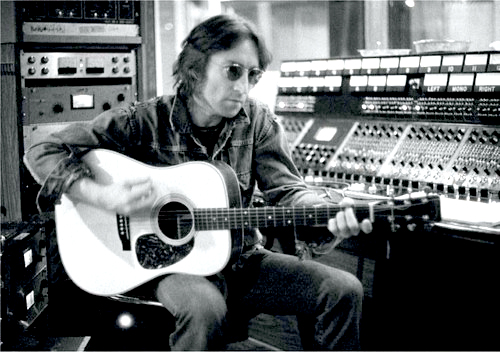
John Lennon with a Fender Telecaster during Walls and Bridges recording sessions, 1973 – Thank you for pointing that out Randy.
Fender VI 6 String Bass Guitar

John with a Fender VI. John played the VI on “Helter Skelter”. George played this guitar on the Hey Jude Video.
The Fender VI was released in 1961 and followed the concept of the Danelectro six-string bass released in 1956, having six strings tuned E to E, an octave below the Spanish guitar. The Bass VI was closely related to the Fender Jaguar, with which it shared styling and technical details, notably the Fender floating tremolo. The VI had an offset body similar but not identical to that of the Jazzmaster/Jaguar.
It departed from the concept of the Fender Precision Bass in having six strings, a shorter scale and thinner strings, and a mechanical vibrato arm. The Bass VI never caught on to the extent that the four-string Precision Bass and its derivatives did. The model was discontinued in 1975.
———————————————————————————————————————————————-
Circa 1959-60 Beatles John Lennon’s Presidents HOFNER Guitar Serial Number 6689 Documented Provenance From Rock Roadie.
Guitars owned by John Lennon rarely come up on the market. Hofner is one of the first guitars of John’s going back to the early days in Liverpool 1960ish. This German made Hofner “President” model circa 1959/60 with serial number 6689 was given to Tappy Wright at his 21st birthday by John Lennon as a birthday gift. Tappy confides, “I was never going to sell this. It was the only guitar that I was going to keep because it was so personal to me.”
John Lennon and Tappy Wright’s friendship is documented in his book Rock Roadie on page 56.
‘Tappy’ was there at the beginning when Eric Burdon and the boys formed the Animals and when they recorded their anthem ‘House of the Rising Sun’. He was there at the end when they re-formed for a world tour in the early 80s. He was also there when unknown guitarist Jimi Hendrix played to a handful of punters in a smoky American club and next day recorded one of his biggest hits ‘Hey Joe’. He regularly took Jimi and his band to the VD clinic as groupies gave them more than their bodies.
Among many others, Tappy looked after superstar Tina Turner and her fiery husband Ike on their first ever tour of the UK. He has seen it all, done it all, been jailed, ‘press ganged’ into the US Army as a deserter, came close to joining the Monkees, was witness and victim to early racism in the music business and has seen drugs kill and destroy.
It is because of this relationship that the Animals organized a party for their buddies birthday in December of 1964. “They wanted to see me turn “21” in style.” Tappy reminisces. “The guest list was to be a little special. Here I was a kid, and I never thought of myself being surrounded by London’s glamourous.”
The book reads: With all the black long eyelashes I barely glanced at the Lads. The music and lights were turned down, and then a huge cake came down. The crowd was singing happy birthday. I was ordered to blow out the candles Eric Burden shouts “Come on Tappy One Tap for the Wish.” I lunged forward, and just then a hand grabbed the back of my neck. With one swift push my whole face was in the cake. I pulled myself free, wiping the icing and cream from my eyes. The room bursted in laughter and applause.
Laughing hardest was the culprit, standing next to me, “Happy Birthday Tappy” said John Lennon, Nice Cake.”
“Yea John you should try some” I put my hand into the splattered remains of the birthday cake, before John could stop laughing, I plastered a sticky layer over his face. I caught site of Eric and wondered if he had really appreciated me covering his famous friends face. John Lennon stood there for a moment, then stuck out his tongue and licked his lips. “Yea its good” he said appraisingly. Hilton Screams out “Fight Fight” and he scooped up a handful of cream and missed Eric and caught Brian Jones.Soon the whole club was like a riot and throwing cake and cream all over the bare legs….The owner of the St. James was not amused and after apologies and stating we would pay for the damages. We saw our way out we left laughing most original 21st birthday and our first with John Lennon.
After the party Lennon asked Tappy to hold the guitar for him. He took it back home and held onto it. Weeks went by and Tappy tried to get a hold of Lennon which was nearly impossible as the Beatles fame increased by the second. Lennon finally contacts Tappy. John says to me” Tappy you play guitar don’t you? He says “Good cake, Happy Birthday!” Tappy laughs, remembering the night.
The lack of photographic evidence of Lennon with this Hofner President’s Guitar suggests that he probably used this guitar at home for writing purposes. It seems highly probable that Lennon may have purchased this Hofner President during his stint in Germany in 1960 of the following year. More importantly, It is significant the John Lennon had this guitar during those early years of the sixties and that it was with him right at the beginning writing such classics as: Please Please Me, There’s A Place, I feel Fine, Help, Ticket To Ride.
Putting speculation aside, it is true that John Lennon guitars with documented provenance are incredibly scarce and few have been available.
http://www.bidami.com/Auctions/AuctionItem?AuctionId=80164&t=&p=0
———————————————————————————————————————————————-
1963 Fender Duo-Sonic SN L22604
20th September 2013
Pop Culture Goes Under the Hammer Including John Lennon’s Guitar and Marilyn Monroe’s Dress
LiveAuctioneers — the online gateway to a world of live auctions — is hosting the live bidding on a range of rare and unique items from the worlds of entertainment, rock and pop culture in The Fame Bureau’s auction, 23rd September at 2.00pm GMT.
John Lennon’s early 1960’s Fender guitar
Lot # 394 Fender Duo-Sonic (wrongly described as a Music Master) guitar with case, owned and played by John Lennon. Est. £25,000-£35,000
Thank you MA51 for helping with the description of this guitar. You just simply ROCK!
Guitar put up for sale again by London Vintage Guitars of Denmark Street London
Asking $65,000 + in August 2019
———————————————————————————————————————————————-
1966 VOX Kensington
Sold at auction for $408.000 dollars in New York.
It was made in 1966 and used by Harrison to play “I Am The Walrus” for a scene from Magical Mystery Tour in 1967. Lennon also played the guitar in a video for “Hello, Goodbye” later that year.
The Beatles later gave the instrument to a close friend of the band, Alexis “Magic Alex” Mardas, as a 25th birthday present. A plaque on the back reads: “To Magic Alex/ Alexi thank you/ for been [sic] a friend/ 2-5-1967 John.”
This guitar is owned by Colts owner Jim Irsay who also purchased George Harrison’s 1964 Gibson SG in 2004
———————————————————————————————————————————————-
1957 Hofner Club 50 This one is owned by Julian Lennon.
Randy Richardson so graciously provided us with the following information on this guitar.
Julian’s Hofner guitar was given to him by myself in Toronto at a Massey Hall concert during his first tour. The guitar came here to Canada from Liverpool with a Georgetown Ontario family in the sixties. The case pictured is not the original case and was well worn. I’m sure he still has the original. The guitar was intended for John as a gift. I felt since John’s passing that Julian should have it.
To add a little more to the story… Julian gave me a really cool poster of himself expressing many many thanks, signing it, “Thanks Valotte” your friend Julian. I did get a chance to hang out with him and his band in the VIP room before the show, one other time years later, while promoting “Smile”.
In the picture you may notice the Pick guard is missing. I found it years later and gave it to Cynthia. I never did find out if it got to him?
John was a hero to myself as well. Nobody could say so much, in so few words. A true genius! A good friend Len Garry (Quarrymen) told me that it was obvious to himself and others, that even at a very young age John had this outstanding wit about him.
Almost had a chance to meet John as I was going to go to NY in march 81 with a friend who had rehearsed with him during the R’n’R sessions at Record Plant. May Pang met my friend in an elevator at RP Studio. Drummer Jim Keltner was out on a binge with Harry Neilson and didn’t show up. They badly needed a drummer and luck had it!! Bill said his heart just about popped out of his chest when May opened the door and waved him into the control room!!! She hadn’t told him who he would be rehearsing with. John was his hero. Photographer Bob Gruin showed up later that day and John cut rehearsal early to do a photo shoot with Bob. John asked Bob to take a couple of pictures with my friend Bill and himself! The famous session shots with the statue of Liberty etc. John had invited him to vist at the Dakota in the following spring. That was when I had planned to give him the Hofner.
So sad. He lives on forever in the music…..
Sincerely Randy Richardson Georgetown Ontario Canada ![]()










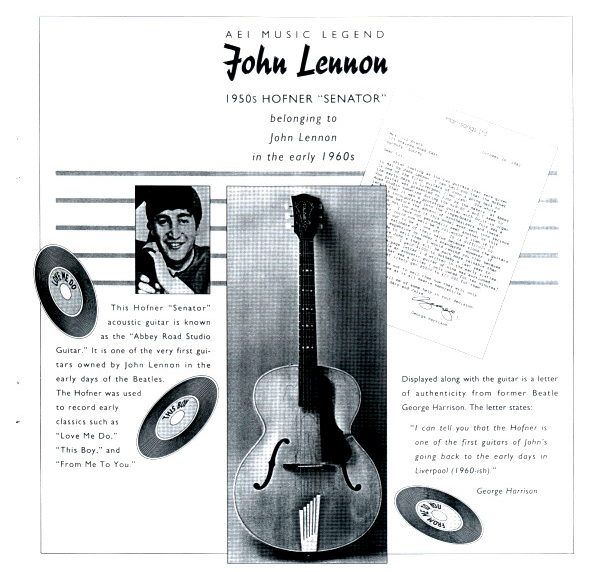











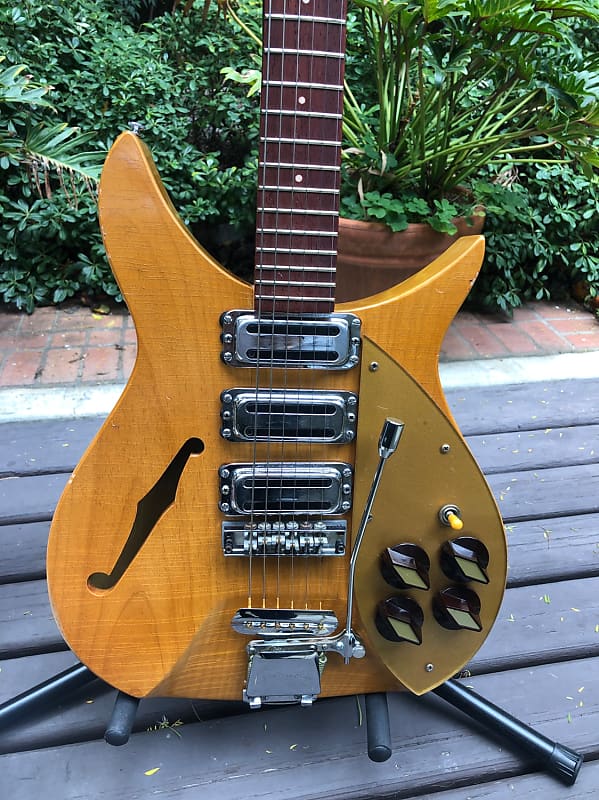



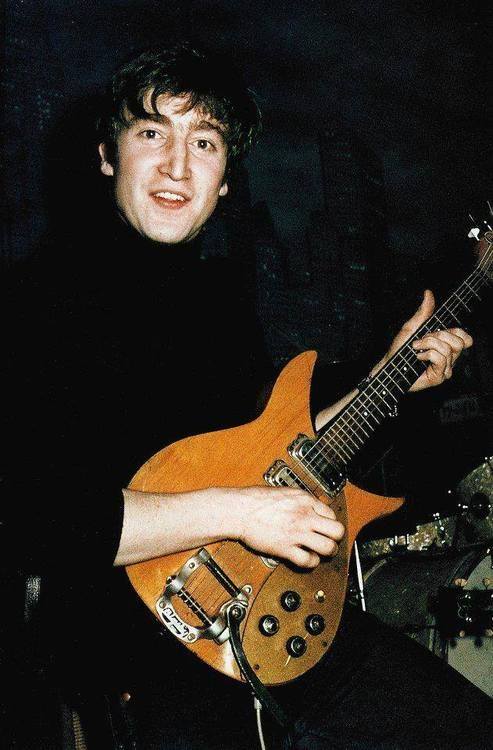













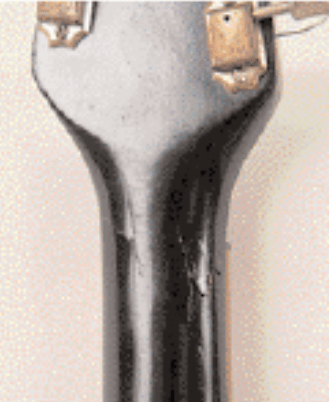

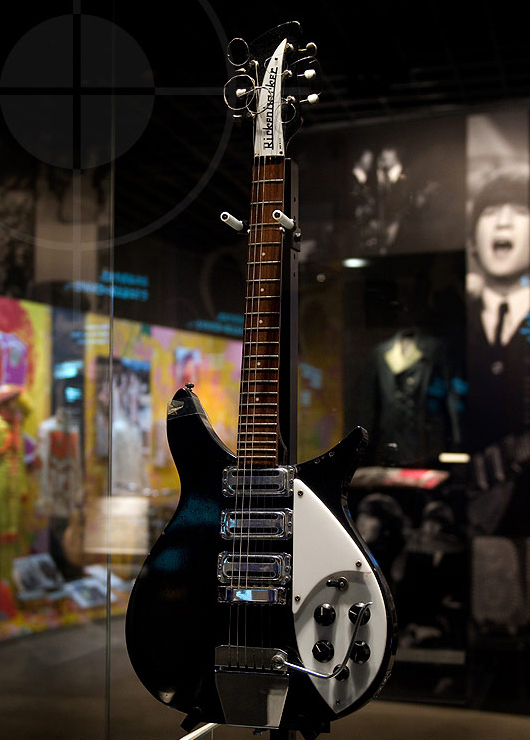




















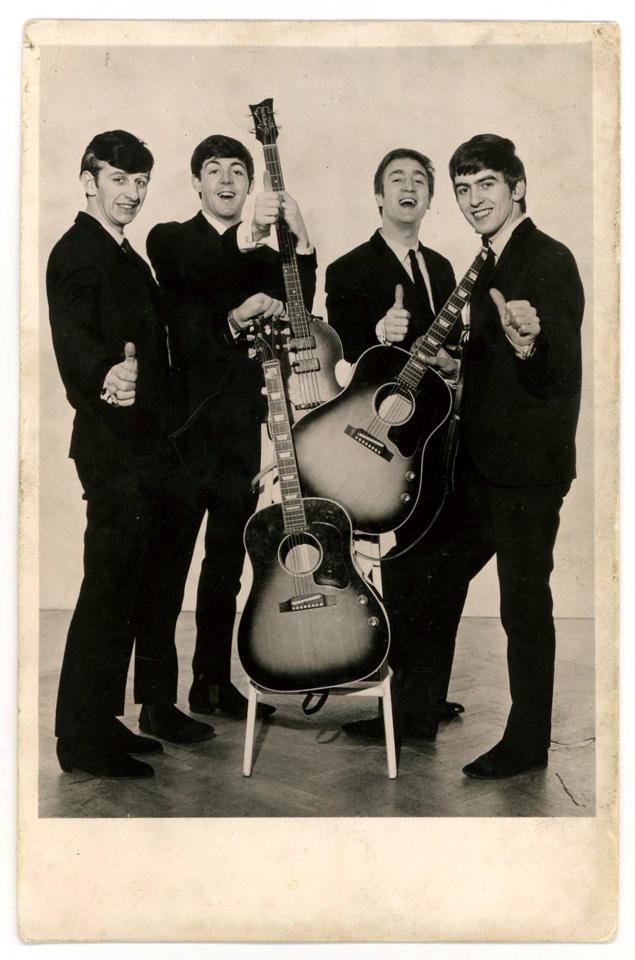




















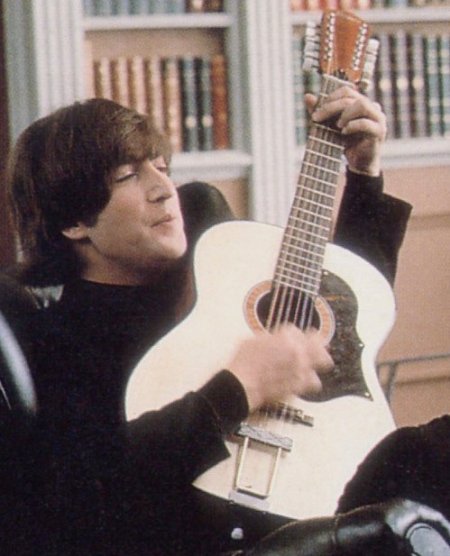





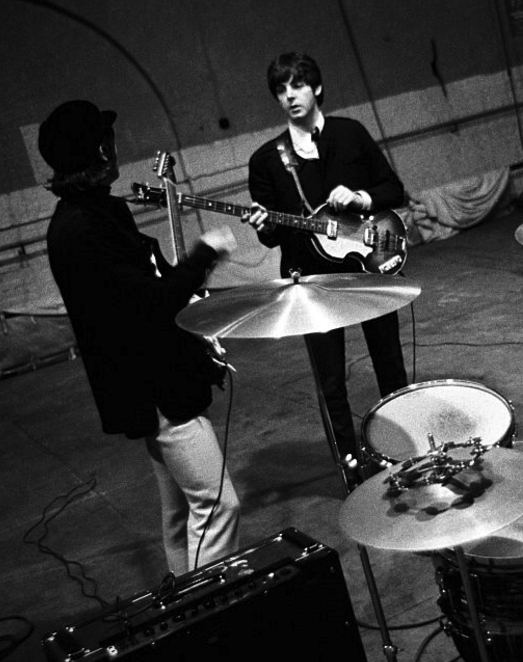













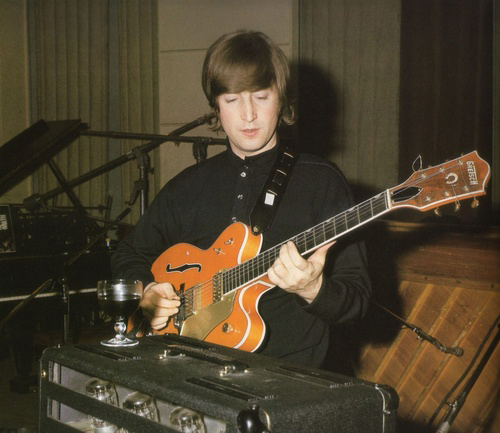






















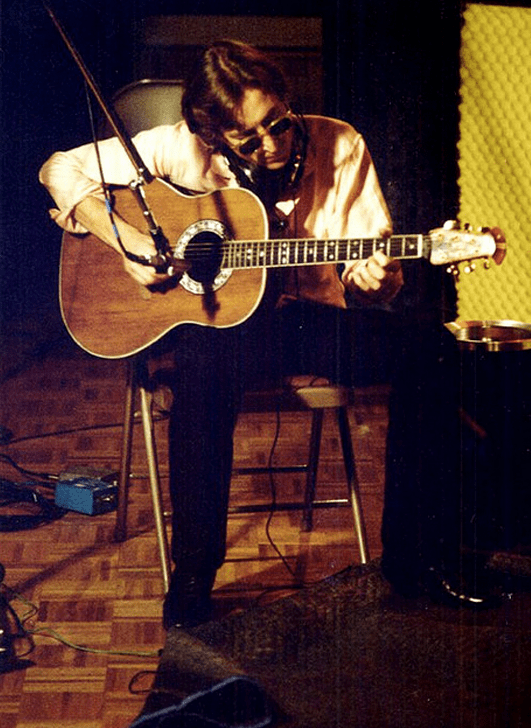




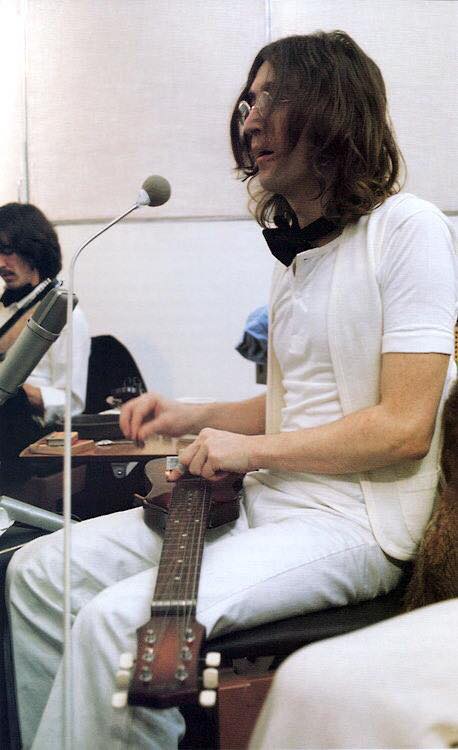
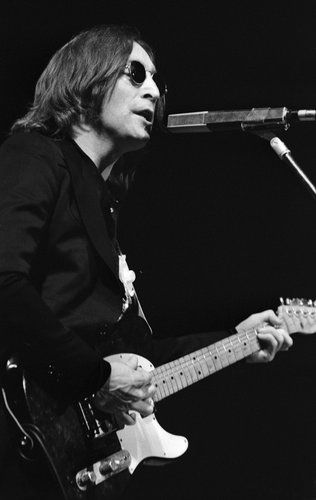


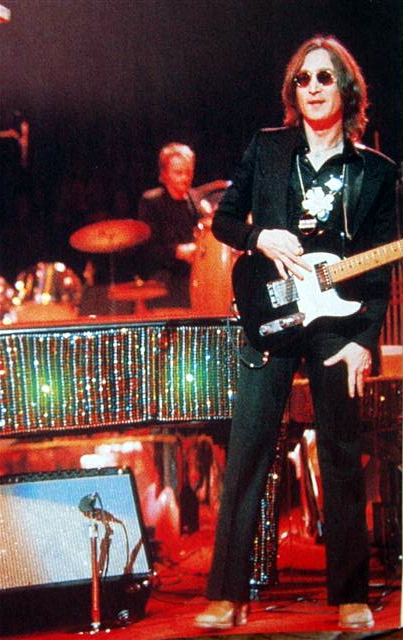
















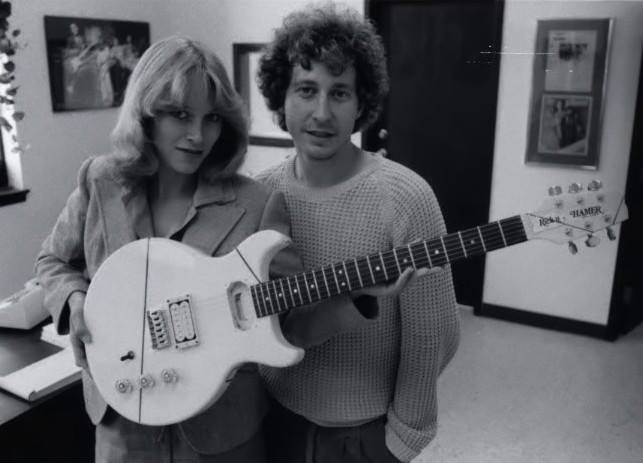















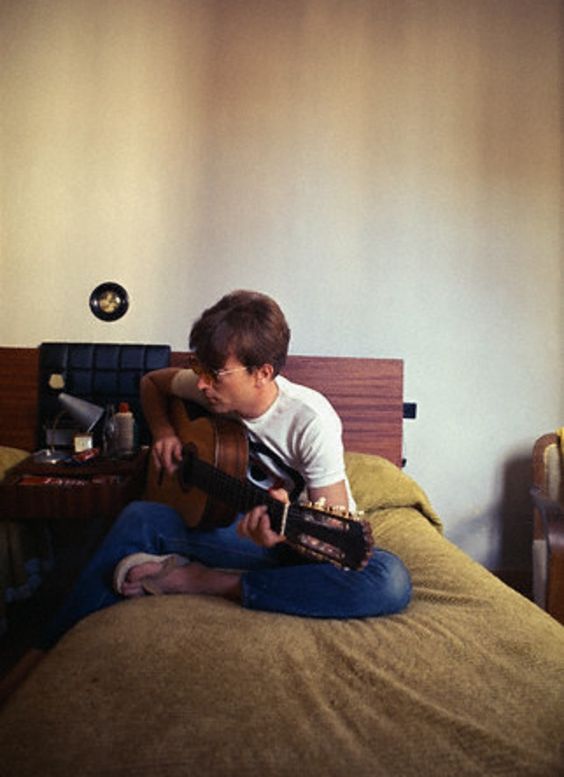





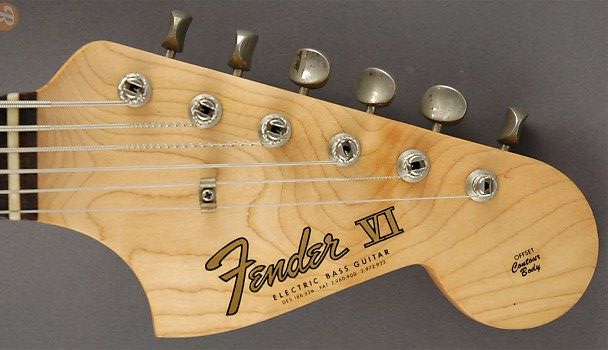
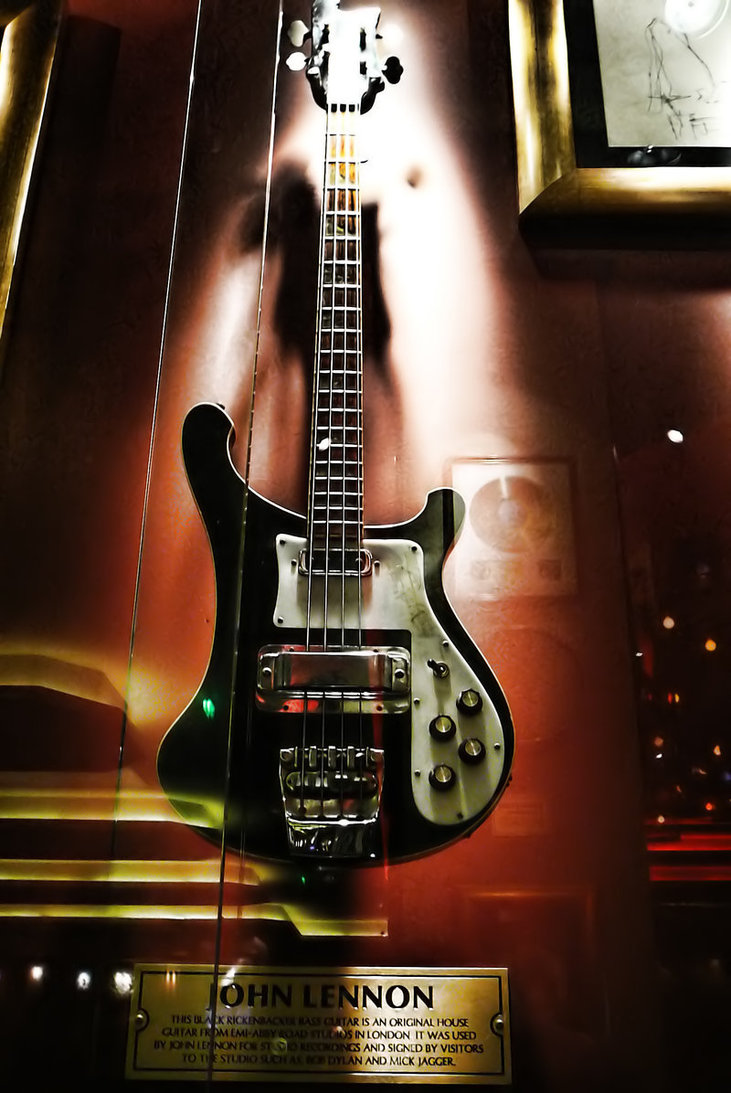







Julian’s Hofner guitar was given to him by myself in Toronto at a Massey Hall concert during his first tour. The guitar came here to Canada from Liverpool with a Georgetown Ontario family in the sixties. The case pictured is not the original case and was well worn. I’m sure he still has the original.The guitar was intended for John as a gift. I felt since John’s passing that Julian should have it.
Hi Randy,
Wow! Just wow! Thank you for giving us this wonderful bit of personal history with Julian’s Hofner guitar. I love that you actually intended to give it to John (my personal hero) and i equally love that you decided that Julian should have it after the world lost John. You are a rock star!!! I got to see Julian live at Expo in Vancouver in 1986.
Thanks again,
Cara 🙂
Hi Cara, Thanks for the kind words. To add a little more to the story… Julian gave me a really cool poster of himself expressing many many thanks, signing it, “Thanks Valotte” your friend Julian. I did get a chance to hang out with him and his band in the VIP room before the show, one other time years later, while promoting “Smile”.
In the picture you may notice the Pickguard is missing. I found it years later and gave it to Cynthia. I never did find out if it got to him?
John was a hero to myself as well. Nobody could say so much, in so few words. A true genious! A good friend Len Garry (Quarrymen)told me that it was obvious to himself and others, that even at a very young age John had this outstanding wit about him.
Almost had a chance to meet John as I was going to go to NY in march 81 with a friend who had rehearsed with him during the R’n’R sessions at Record Plant. May Pang met my friend in an elevator at RP Studio. Drummer Jim Keltner was out on a binge with Harry Neilson and didn’t show up. They badly needed a drummer and luck had it!! Bill said his heart just about popped out of his chest when May opened the door and waved him into the control room!!! She hadn’t told him who he would be rehearsing with. John was his hero. Photographer Bob Gruin showed up later that day and John cut rehearsal early to do a photo shoot with Bob. John asked Bob to take a couple of pictures with my friend Bill and himself! The famous session shots with the statue of Liberty etc. John had invited him to vist at the Dakota in the following spring. That was when I had planned to give him the Hofner.
So sad. He lives on forever in the music….. Feel free to add any of the story to your webpage, and thanks. Sincerely Randy Richardson Georgetown Ontario Canada 🙂
PS; It just occured to me …. Julian’s guitar could have hung together or crossed paths at some point in Liverpool.. lol I don’t think too many stores were carrying Hofner in those days??? You never know? Cheers
Re. one of the last photos in this entry, showing John with a white Telecaster “John Lennon with a Fender Telecaster during Mind Games recording sessions, 1973?” – it cannot be a picture from those sessions (July & August ’73), as John had gotten a buzz cut around April/May of that year and his hair was still growing back. I’d say the photo shows John in 1974, perhaps during the Walls & Bridges sessions. Great post, I couldn’t stop until I had looked at every single guitar entry.!
Thank you for pointing that out Randy! This website is for fans of the band and i love that people help with corrections and advice and comments about how much they enjoy the site. I LOVE THAT! Thanks again 🙂
Are you interested in any Beatles memorabilia? Books…some older…some newer…Irish Linen tea towel framed…mint condition…look forward to hearing from you.
Hi Wayne, Thank you for the message. I would not be interested in the memorabilia though as I simply have no place to keep it anymore. Thank you for asking 🙂
Thanks Randy! I did use the story in my webpage. You ROCK!
Hey! Someone in my Myspace group shared this site with us
so I cam to check it out. I’m definitely loving the information. I’m bookmarking and will be teeting this to my followers!
Fantastic blog and outstanding design.
Not a bed section on the ’58 325 Randy. Of course things have been clarified a little since the sections your quoted from me were written. Some of the articles I wrote date back to the late 90’s. Well done overall!
Hi Glen, I’m honoured that you would even leave a comment on my page! I like your articles because i love the detail in the information. I tried to combine the best of what is available on this site and that includes your articles. Thanks again! Cara 🙂
Hi. Anybody knows about Rickenbacker 4001 bass on a photo above?
I can’t find much information on this Rickenbacker Bass.
Nice site with many photos I’ve never seen! I hate to offer up a correction, but this is going to bug me.. You have a nice shot of John playing his 1964 325 and his Vox Python strap incorrectly dated. ” Lennon playing his new Rickenbacker 325 on the Ed Sullivan show in Miami February 16, 1964″. This was actually in August of 1965. He got the Python strap and performed with it for the first time on a Dutch television show in June of 1964, which is also the only time he performed live with his 325 12 string.
Wait, I tough Julian wanted the Yamaha CJ-52 Dragon Acoustic Guitar, but Yoko would’t give it to him.
Hey Paola,
That’s what i heard too. Sad huh!
Nice Site amazing clear pictures. Just Sad you wish to go along with what could be the Biggest rock n roll Rip off ever. There is no paper proof That the Gibson J160 ever belonged To the Beatles or even left the factory on the same day.
Only guitar they can be sure Is serial number 73161 As you said That was John Lennons Guitar. Other Harrisons Noboby has solid proof this guitar was his. It appears that Americans will invent anything to make money. The expert is only claiming it is the guitar by his Eye Well he needs Glasss. I have a Picture that proves him wrong. The Worlds biggest Acution Houses would not Touch this Guitar.
Nobody In the UK, Believes it dissappered from London, to Turn Up in San Diego of all places In the 60s. Not many flights then.
This Expert knows there is no way to proof hes wrong on paper, and using his so call expertiser to fool the world for pesonal gain.
He should be locked up with Chapman in the same cell.
Hi, concerning Lennon s Telecaster with Bigsby …I got a picture of it on his jome studio wall when he was recordlng the Imagine lp. So it must have been his. Let me know if u need this pic .
Cheers
Johnny Silver
I would love the pic! You Rock Johnny Silver – Send it too cara_carlson@shaw.ca
If you happen to see this, I’m doing research on that very guitar, and would love any extra pictures or info you have! Thanks, John.
kerzmanguitars@gmail.com
Hi John, I have not found anymore pictures or information on this cream Telecaster. I sent an email to Sean asking if he had any information on this guitar, but as of yet…no reply 🙂 If you find any information please update me so i can add to the website. I would appreciate that. Thank you!
Hey very nice blog!
Nice blog!
There’s a gold top Gibson Les Paul owned by John which he gave to Phil Spector as a present in the early 70s. Spector’s a wife posted a picture of it on Facebook a while ago. It seemed to be in poor condition and one pickup was missing.
Unfortunately she has deleted her Facebook account, so the picture is noit online anymore.
Thanks for the compliment Jürgen, and also the info on the gold top les paul! I will be searching this one down and when i find it i will credit you for the tip. I always appreciate when fellow Beatle/Lennon/Harrison fans send me information.
Hi there, I was trying to send guitar pics to cara_carlson@shaw.ca, but didn t work out (recipient rejected)
Is there an alternative email?
Would you please try to send to cara.carlson@shaw.ca. Looking forward to seeing the pics 🙂
Around 1969 I traded my Hofner Verithin for a secondhand Gibson J160E at a music shop near Liverpool. I could only afford it because it was a bit scratched and had a ‘history’. There were a few scratches, not terribly serious, on the front, and a specific message scratched into a certain part of the guitar. I was told at the shop that it had belonged to a famous musician, and the message had been scratched there by his wife, who was furious at his infidelity, but they would not tell me the identity of the former owner as they had been sworn to secrecy. My guess at the time was that it had been either John (Cynthia) or George (Patti), but had no way to check it out, and after a few years I sold it on for a very modest sum as I was collecting money to buy a car.
Every time I see an old J160E for sale I look closely, as I would love to have it back. I’m not about to reveal what the message was, or where it was scratched, as I’m the only one who can identify the guitar in this way. Just thought you might be interested (it was a long time ago . . )
Ooooooo, i’d love to find that guitar 🙂 Seriously, i really hope you find it JohnS. If you ever bump into it and are able to get it back, please send me a picture. My guess is it was Cynthia 🙂
Many thanks for your comments. Whoever had owned the guitar, it must have been one he played at home for the scratched message to have been put on in secret. I still have the sales receipt from the music shop!
As a musician and a guitar lover myself, i know how instruments can become a target for vandalism. I had an partner who learned very quickly how important my guitars are to me. When it became an argument over “the guitars or me” that person became my Ex. I had one get damaged during an argument and i was furious. Needless to say i live alone now and my collection and i are very happy 🙂
The Les Paul is a standard not a custom. The picture at the top of the page is not Lennon.
Hey Eddie, I was kinda iffy about the picture at the top too. It’s gone. Thanks for the correction on the Les Paul. I’m good with Beatle fans helping me out with input. I appreciate that you would stop by and check out the page 🙂 Thanks Eddie
Thanks for this wealth of information. With gratitude from a fan.
Thank you for visiting Beatles and Beyond Doak. Made for fans by a lifelong fan!
Breaking news (December 3, 2017) – John’s Gibson J-160E found!
Hurrah!
http://www.prweb.com/releases/2015/07/prweb12876725.htm
I still have johns gretch new yorker cut away acustic pre 1960 no9988. I paid the last payment on it to rushworths music store,He traded it in for jim gretties new amp at Hessies,while i was fitting out new signs in stanley street liverpool.
I would love to see some pictures and hear more about it from you Tex! Please tell me more. Thank you Cara
Would like to chime in on the Black Telecaster a bit. I’ve been researching this guitar and found through several forums, discussions about that guitar. One forum that is now no longer up ( i think I have a screen shot somewhere to find) identified the guitar as a 1959 telecaster. He explained that the neck was a one piece maple which dates it around 58-59 because in 1960 and up they started using rosewood fretboards (two-piece necks) at that time, and having seen the bridge plate he noted the strings do not go through the body, but through the bridge plate. This also dates the guitar to late 58 into 1959 as well. As for the Gibson humbucker, based on the lettering, it is NOT a neck humbucker, but a bridge humbucker in the neck position. Having looked at the lettering on guitars from 1970-1972 ( the years these were available) and how they are on Lennon’s guitar makes a bridge. Of course it’s “possible” that they put the neck inside the bridge cover but that would be too much work just to have the words read a certain way, so I believe it to be what it is, an embossed Gibson bridge humbucker in the neck position. How it got labeled a 63 telecaster is beyond me because of those two traits. I am making this guitar this year based on what I was able to find out by process of elimination. It will be a 50’s telecaster body no holes for ferrules because the strings will go through the bridge plate, a Fender MIM 1950’s one piece 7.25 radius neck, a 1959 Epic Telecaster Bridge pickup from Klein, a vintage bridge Gibson embossed (c1972) humbucker. I am however going with vintage style Fender tuners rather than Gotoh.
I love this information! So little is known about the black strat and there is a ton of speculation about this guitar and the year. From the information i have been able to find in Fender history, we know that Fender started painting the head stock to match the body in 1962 as a special order and released them in 1963. Even on those history pages the guitar is just referred to as an early 60’s. I hope you will share a few pictures of your guitar once you get it completed. I’d love to see it. Huge thank you for stopping by the website! – Cara
Beatles Gear has a rundown on this guitar and a limited edition replica. Might find more info there.
This is a great site. But the Fender you say is a Musicmaster has two pickups. All Musicmasters, vintage and reissues, only have one pickup. The Duo-Sonic was and is the one that has two pickups. Same guitar but two pickups. So unless a pickup was added this has to be a Duo-Sonic or has had the neck changed to a Musicmaster neck which wouldn’t make sense. The necks are the same except for the decal. But looking at the photo you can see it has two words, as in Duo-Sonic. Musicmaster is always one word on the headstocks. Still this site has a lot of great info and pictures. Thank’s for it.
Hey MA51, Thank you so much for identifying the guitar. You of course are correct and i will make the corrections on the web site to identify this guitar properly. I used the Auction house’s description when i posted this picture. Huge thank you for the information and thank you for stopping by my website. Beatles fans ROCK!
I corrected the description of the Duo-Sonic. Thanks again 🙂
Great article, but you really need a proofreader. Many times you wrote it’s (which is “it is”) when it should have been its (as in “its use”) Also you wrote advise, when it should have been advice. And I am only part way through the thing.
I know right!!! 🙂
I’m from the Hamer family. My Dad shaved down the neck of the Hamer Special so it would be like a Rickenbacker and added the red stripe. The woman in the photo with Frank is a long time friend of my parents. I haven’t seen that photo before. I know it was a special moment for my dad to give a guitar to one of his heroes. He ended up making guitars for George and Paul as well. Thanks for putting this together. Made my day coming across it.
I’m honored to meet a member of the Hamer family! I am so pleased that you gave us some background on this special guitar. I did not know that your father made guitars for George and Paul too. You have a cool dad. Now i will have to see if i can find info on those guitars for George and Paul. Thank you for stopping by 🙂
Great article. Thank you!
Thank you for crediting me for all my work researching Lennon’s Guitars taken from my website Fab Guitars of the Beatles. A lot of sites just run my work without credit.
You’re welcome and deserve all the credit for your excellent articles.
Thank you John.
The colour photo of the guy playing the 325c64 in the black turtle neck is actually not John it’s Adam Hastings of the Bootleg Beatles.
You’re right James. I should have known by looking closer at the guitar 🙂 Fixed
This is a very small but kind of important correction. Since the Get Back documentary has arrived, the Get Back/Let It Be sessions are much more known than before. The correction is the John did NOT use a shotgun shell as a slide in For Your Blue. Yes it appears to be one but it isn’t. It’s just a red cylindrical lighter. Yes just a lighter. I know since it’s a “blues” and it’s slide guitar, the shotgun shell is appealing but it’s just a lighter. If you find close up shots of him playing you will see that “shell” has no firing pin. Just a smooth flat round base. What is harder to see are the lighter parts at the other end, mostly hidden in his hand but flashes of them can be seen.
I gathered some images and created others for mostly post-Beatles guitars John used. MUCH thanks to you and especially John F. Crowley. https://imgur.com/a/3YGSq3Q
Hey Greg, nicely done! That looks great 😊
I gathered some images and created others for mostly post-Beatles guitars John used. MUCH thanks to you and especially John F. Crowley. https://imgur.com/a/3YGSq3Q
This was a fascinating bit of Beatles history!
Thank you for such an amazing in depth article, the best I have read.
As a Beatles fan I was thrilled to find an old guitar at a swap meet last weekend and to find out it’s a Gallotone Champion, it’s now a keeper.
That is so cool 😎. I’m jealous ha ha!